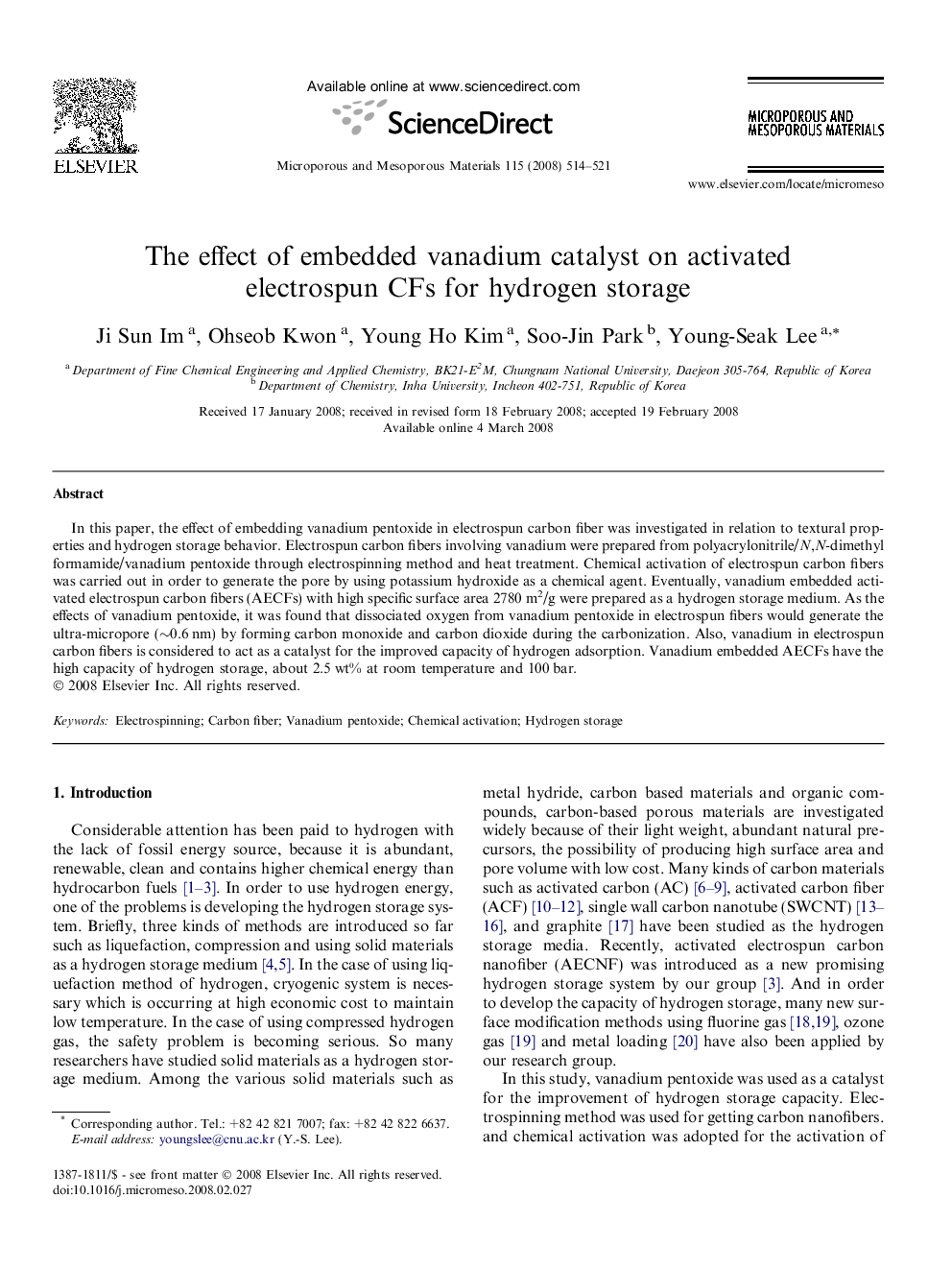| Article ID | Journal | Published Year | Pages | File Type |
|---|---|---|---|---|
| 76223 | Microporous and Mesoporous Materials | 2008 | 8 Pages |
In this paper, the effect of embedding vanadium pentoxide in electrospun carbon fiber was investigated in relation to textural properties and hydrogen storage behavior. Electrospun carbon fibers involving vanadium were prepared from polyacrylonitrile/N,N-dimethyl formamide/vanadium pentoxide through electrospinning method and heat treatment. Chemical activation of electrospun carbon fibers was carried out in order to generate the pore by using potassium hydroxide as a chemical agent. Eventually, vanadium embedded activated electrospun carbon fibers (AECFs) with high specific surface area 2780 m2/g were prepared as a hydrogen storage medium. As the effects of vanadium pentoxide, it was found that dissociated oxygen from vanadium pentoxide in electrospun fibers would generate the ultra-micropore (∼0.6 nm) by forming carbon monoxide and carbon dioxide during the carbonization. Also, vanadium in electrospun carbon fibers is considered to act as a catalyst for the improved capacity of hydrogen adsorption. Vanadium embedded AECFs have the high capacity of hydrogen storage, about 2.5 wt% at room temperature and 100 bar.
